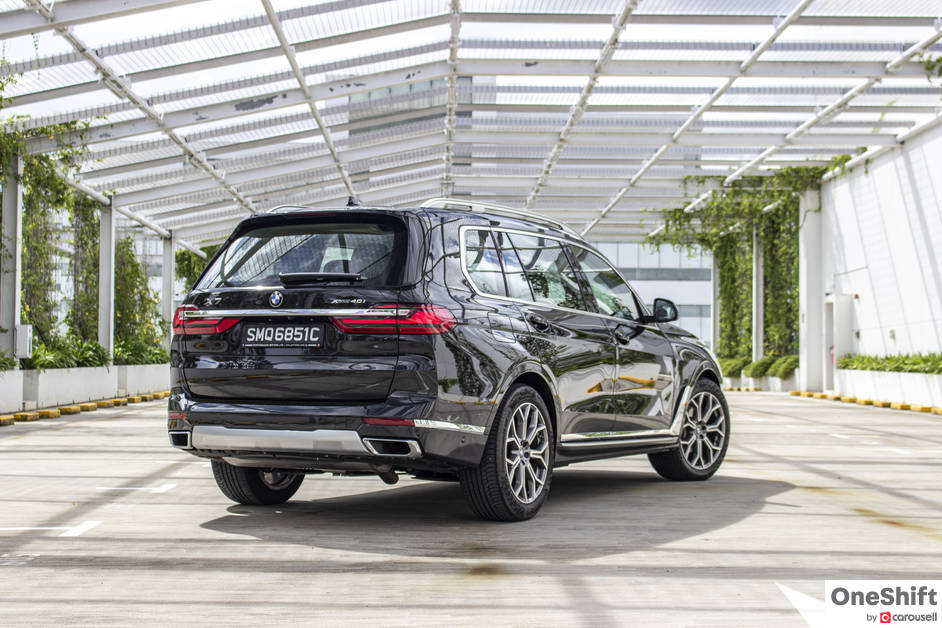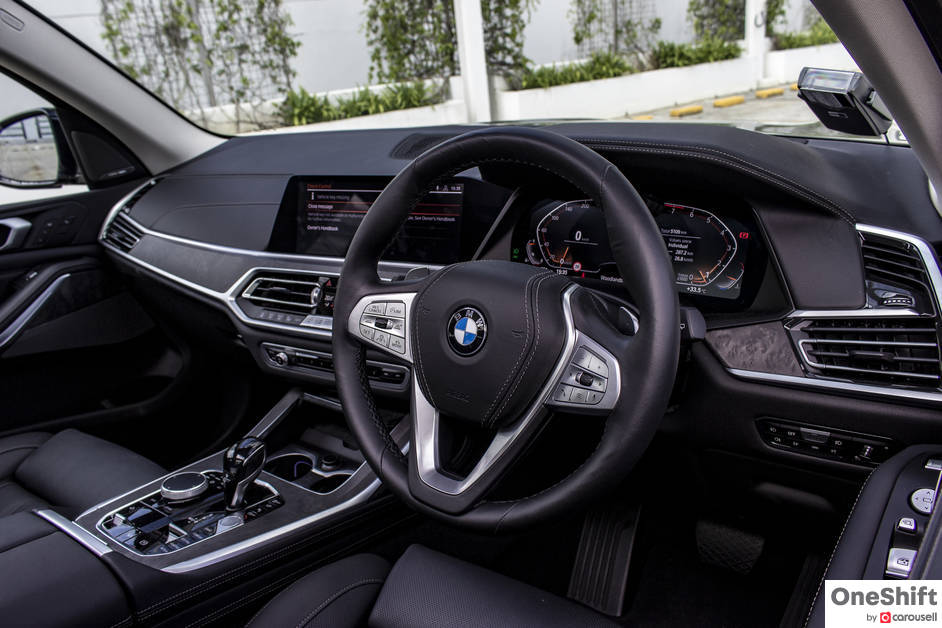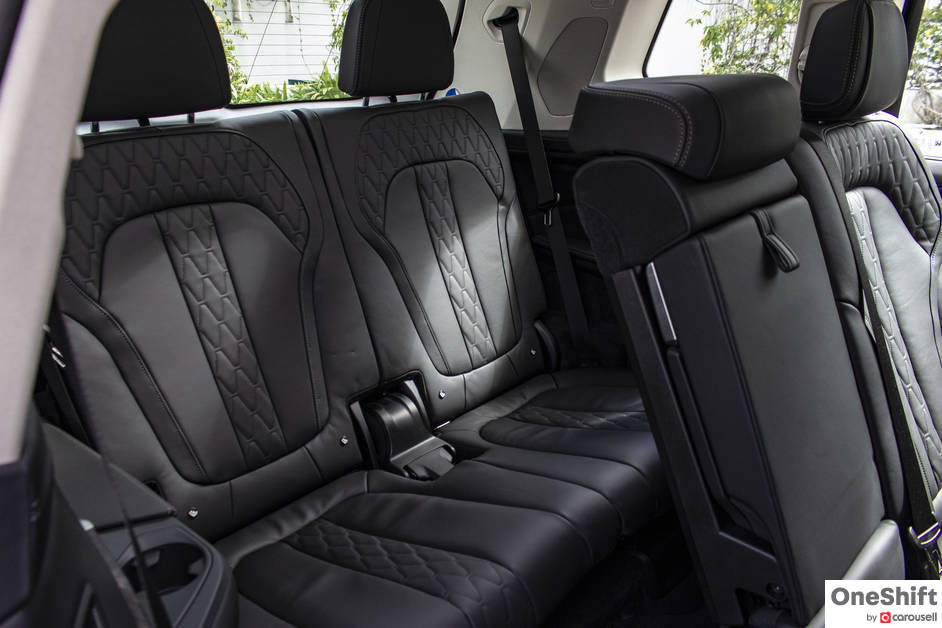Majesty.
BMW may not be first to enter the Large Luxury SUV race, but their first ever go at it, with the all-new X7 is mighty impressive.


BMW may not be first to enter the Large Luxury SUV race, but their first ever go at it, with the all-new X7 is mighty impressive.
BMW has come a long way since introducing their very first SUV in the late 90s with the X5. The Bavarian manufacturer had identified the growing importance of developing its own SUV decades ago, and after jettisoning the Land Rover brand which it had acquired for that purpose for a relatively short period, BMW subsequently placed additional focus on its SUV development.

Despite some early issues with inadequate rear leg space in the first X3 when BMW began expanding their sub X5 product lineup, their range of SUVs, or as they’d like to term SAVs (Sports Activity Vehicle) were well received by the public. BMW had correctly identified that there was a growing demand for such cars, especially within the United States, which is where their manufacturing plant for X3 models and above is situated now.

BMW SAVs were then already special, since they still drove like BMW road cars when on tarmac, instead of going the direction of its former acquisition Land Rover, which placed greater emphasis on being the best ‘Four x Four by Far’.

Their SUV range today has even expanded with “Coupe” variants known as SACs or Sports Activity Coupes. The lineup, which now includes a recently refreshed X1, the X2 which features very bold exterior styling, the X3 which has grown considerably, and its sister car the X4 SAC, and the new X5.
The BMW X7 is the company’s first attempt at building a large luxury SUV, and competes directly with the likes of the seven-seater flagship Mercedes-Benz GLS and five-seater Range Rover.

While the X7 nameplate is intended to portray that it is the “7 Series” of their SUV range. However, it does seem more like a lengthened BMW X5. A few design differences like its imposing grille, a straight beltline, and elements mirroring the 7 Series’ design cues, like its “Ice Hockey Stick” side trim, places emphasis on its added length, and a more upright stance.
The dashboard of the X7 is a near-identical carryover of the one found in the X5. Its driver-oriented centre stack, which includes a 12.3” Control Display, is powered by BMW’s current Operating System 7.0, which we also find in the 7 Series and the new 3 Series. The operating system is designed to be more natural in response to voice inputs, and responds to the activation phrase “Hey BMW”. Gesture Control also makes its way into the X7, allowing users to operate the infotainment unit with hand gestures, helping to keep eyes on the road.

Other luxurious touches, like the available CraftedClarity glass application which we did not make it in our test car, includes hand-crafted crystal glass on the gear selector, iDrive Controller knob, Start/Stop button and even the volume control knob; features which would be a welcome inclusion to the X7’s interior.
The interior is illuminated during the day by a two-piece Panorama glass roof Sky Lounge, which lights up when dark, courtesy of 15,000 LED lighting elements, that can be switched between a choice of six colours of the X7’s ambient light settings.

The X7 is available in seven available trim choices, including the open pore poplar grain anthracite-brown on our test car, which I have grown to appreciate; this is combined with nine shades of leather upholstery to choose from, including 5 choices of ultra-lux Merino leather. Front seats benefit from ventilation and heating, while second and third row seats are heated (though we would hardly need heating in our tropical climate). Front passengers also benefit from temperature controlled cupholders, just so that you can take your time to enjoy that morning cuppa, or to savour your moments with a precious cold cup of Tiger Sugar tea.

With the play up on luxury, the BMW X7 is available in six or seven-seater configurations, where in the six-seater variant, the middle row is replaced with individual seats for added personalised travel comfort. All seats are electrically controlled, however, we would wish that they were a little quicker in getting out of the way when folding or deploying them.

With a wheelbase of 3,105mm, 10mm less than the LWB 7 Series, and 40mm more than the X5, the second and third row seats easily accommodate adults, without compromise on leg space. Entry and exit is further made easier thanks to the X7’s large rear doors.

Cargo space with 326 litres of load capacity when all seats are deployed is already impressive. A two-piece tailgate, like on the X5 reduces the rear-end footprint when the boot is open, while the load area is neatly squared off. A seat adjustment control panel located against the boot wall, makes easy work of adjusting the middle and rear rows to an ideal configuration. The 2-axle air-suspension can also be lowered with a push of a button on the lower boot lid, to aid in the loading of heavier items. With all seats folded, the X7 boasts a maximum of 2,120 litres.

While we had some road time with a delicious quad-turbocharged M50d diesel engined variant of the BMW X7 and later on, the refreshed 7 Series in Poland a year ago, Singapore only receives one engine option, the xDrive40i with a three-litre In-line six petrol. Power is rated at 340ps, while maximum torque of 450Nm, is spread generously from between 1,500 to 5,200rpm; and hauls the 2,400kg luxo-barge to 100km/h in a span of just 6.1 seconds. In comparison, that is just 0.1 seconds more than the lighter Porsche Cayenne Coupe we recently tested.

The 8-speed ZF-sourced Steptronic Sport transmission which sends power to all wheels, has been revised with a wider gear ratio spread, and new control electronics. The changes are intended to improve overall efficiency, by reducing engine speed at higher gears. Adding to the X7’s ride comfortable ride delivery, BMW has also included new torsion dampers to the transmission to reduce rotational irregularities inherently created by the powertrain.

Drive to the wheels is also constantly varied with the BMW xDrive intelligent all-wheel-drive system, which works in tandem with Dynamic Stability Control (DSC). The system is even able to send all of its drive to the rear wheels only, when required. In delivering an impression that the X7 is rear-wheel driven, the system also maintains a rear-biased drive setup when it is put through its paces.
With a front double-wishbone, and five-link rear setup, “pillowed” by a self-levelling two-axle air suspension; ride quality which is intended to be supple, can be dialed up in firmness for a spirited drive. The DSC system also sorts out how the car is loaded and how much it is weighed down, and factors this into the X7’s braking modulation to ensure proper braking performance. From speeds above 138hm/h, ride height is lowered by 20mm for added stability. With its well-padded interior, the X7 offers a hushed ride, the straight-six up front, lets off a distant purr, as the ultra-lux BMW SAV wafts along.

An available Executive Drive Pro option adds active roll stabilisation, with the use of electric swivel motors, which are designed to compensate for body roll around corners.
Adding to the car’s agility is BMW’s Integral Active Steering, which offers greater maneuverability to the X7 by reducing its turn circle at low speeds by steering the rear wheels slightly in the opposite direction, and improves high speed stability and comfort by steering them in the same direction as those in-front.

Driving assistance technologies embedded into the X7, are designed to make driving even more pleasurable. Systems like its Active Cruise Control with Stop & Go function, Steering and Lane Control Assistant that includes the Lane Keeping Assistant are designed to take over some of the hassles of driving. In Singapore’s conditions, where there is constant start-stop traffic, the Active Cruise Control tracks and follows the car in-front, and adjusts its speed accordingly. Even obstacles like roadworks are spotted by its sensors, which in-turn enables the Steering and Lane Control Assist to help drivers guide the X7 through narrow channels with ease.
The Reversing Assistant feature makes backing out of a tight spot even easier, as the X7 is able to retrace the path previously taken, up to a distance of 50 meters.
For that extra middle and rear legroom, and additional creature spoils, compared to the 5+2 seater X5, where X7 also drives a little better, the price differential of more than $100,000 might be quite a hard pill to swallow.
While it is a car for a select few, it certainly delivers a statement with its road presence and majestic styling.
#G07 #THEX7 #BMW #X7 #SUV #SAV #Singapore #SG #Cars #Autos #TestDrive #Roadtest
Credits: Words and Photos by Clifford Chow







- Convenient and Hassle-Free
- Consumer Protection
Transparent Process
With No Obligation


Get the Best Price for your used car
from 500+ dealers in 24 hours







